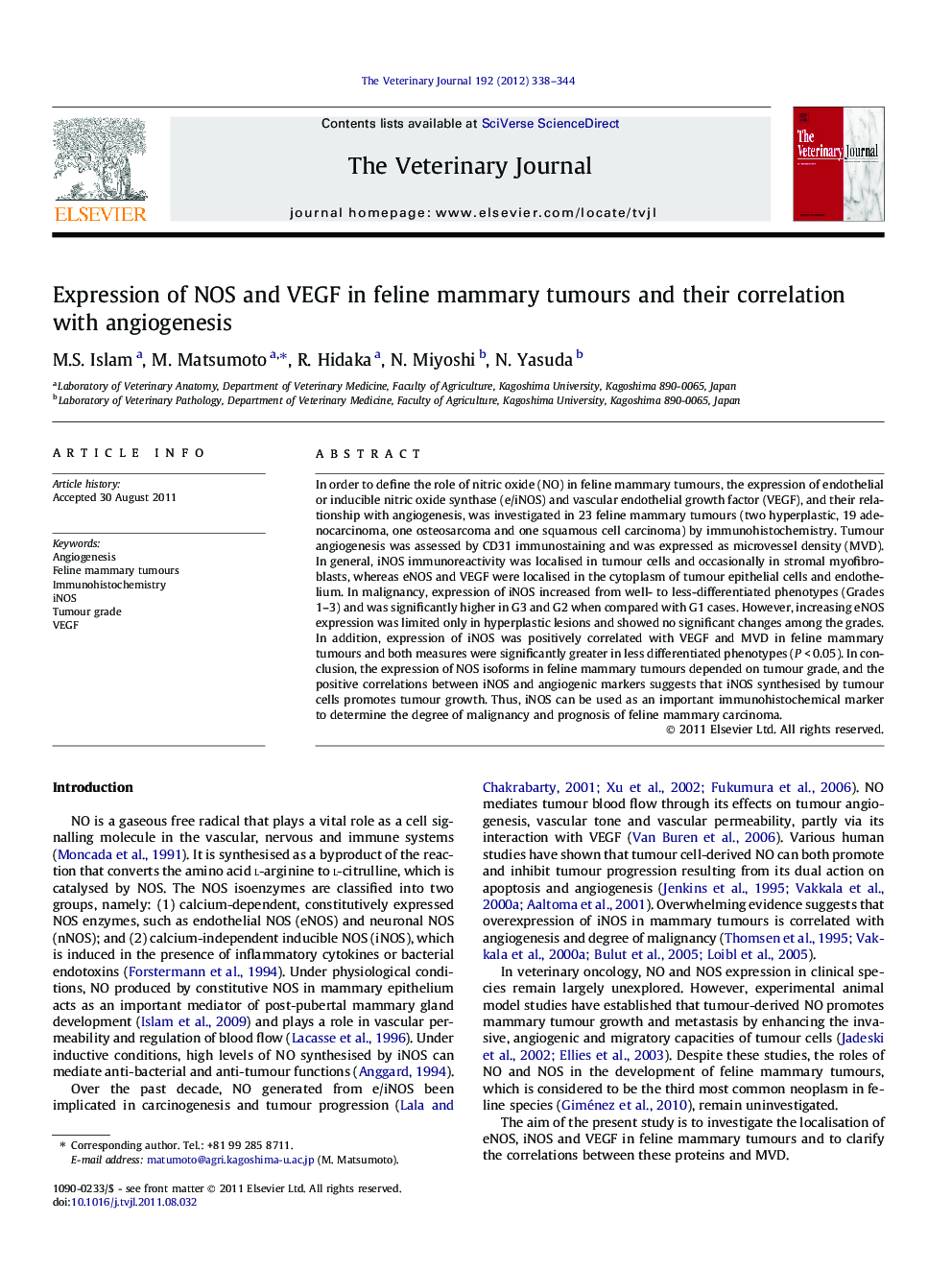| Article ID | Journal | Published Year | Pages | File Type |
|---|---|---|---|---|
| 5799359 | The Veterinary Journal | 2012 | 7 Pages |
In order to define the role of nitric oxide (NO) in feline mammary tumours, the expression of endothelial or inducible nitric oxide synthase (e/iNOS) and vascular endothelial growth factor (VEGF), and their relationship with angiogenesis, was investigated in 23 feline mammary tumours (two hyperplastic, 19 adenocarcinoma, one osteosarcoma and one squamous cell carcinoma) by immunohistochemistry. Tumour angiogenesis was assessed by CD31 immunostaining and was expressed as microvessel density (MVD). In general, iNOS immunoreactivity was localised in tumour cells and occasionally in stromal myofibroblasts, whereas eNOS and VEGF were localised in the cytoplasm of tumour epithelial cells and endothelium. In malignancy, expression of iNOS increased from well- to less-differentiated phenotypes (Grades 1-3) and was significantly higher in G3 and G2 when compared with G1 cases. However, increasing eNOS expression was limited only in hyperplastic lesions and showed no significant changes among the grades. In addition, expression of iNOS was positively correlated with VEGF and MVD in feline mammary tumours and both measures were significantly greater in less differentiated phenotypes (PÂ <Â 0.05). In conclusion, the expression of NOS isoforms in feline mammary tumours depended on tumour grade, and the positive correlations between iNOS and angiogenic markers suggests that iNOS synthesised by tumour cells promotes tumour growth. Thus, iNOS can be used as an important immunohistochemical marker to determine the degree of malignancy and prognosis of feline mammary carcinoma.
